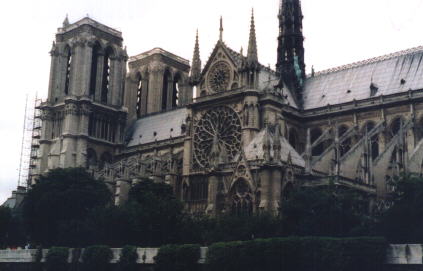
Paris has 36 bridges and we crossed over half of them including these two. The first shows the "N" indicating it was built during Napoleon's reign. The second, Pont de Alexandre III, is one of the prettiest in Paris.
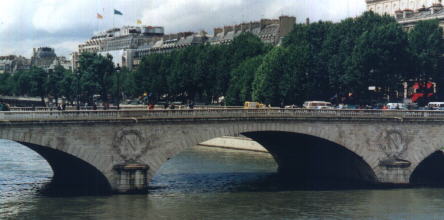
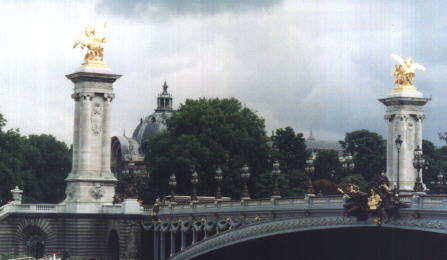
All that remains of the Bastille is this monument. It commerorates those who died in the 1830 Revolution.
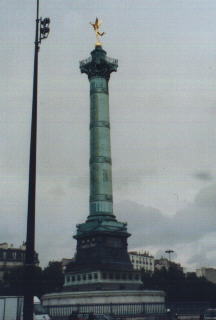
Our first museum visit was to Le Louvre. Bobbie is standing in the courtyard by one of the pyramids designed by IM Pei. These serve as entrances to the museum.
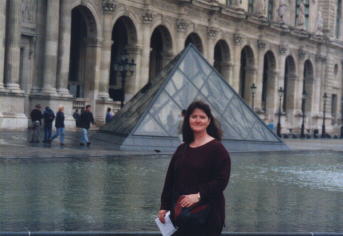
Inside we saw the Mona Lisa, Winged Victory and Venus de Milo as well as these ancient statues. The Emperor Augustus and Bruce with the god of the Tiber.
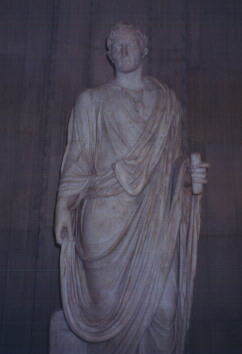
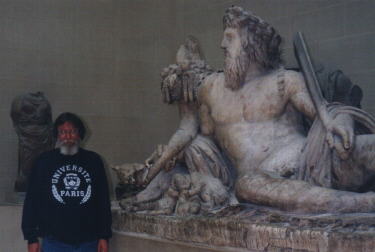
From the Louvre one looks across the avenue to the Jardin des Tuileries begining with this Arc du Carrousel celebrating Napoleon's victories.
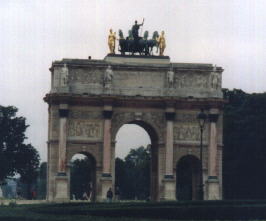
Inside the garden is a wonderful place to sit around one of its many fountained ponds, watch people, read a book or simply look to the Arc de Triomphe in the distance.

At the other end of the jardin Tuileries is Place de la Concorde. This was the site of the guillotine during the Reign of Terror. Now it has an Egyptian obelisk dedicated to Napoleon.
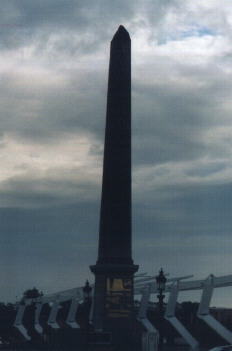
The Arc de Triomphe anchors the Champs-Elysees opposite the Place de la Concorde.
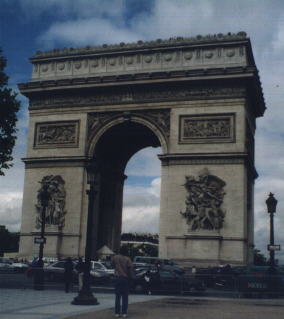
The view of the Champs-Elysses gives you an idea of its granduer.
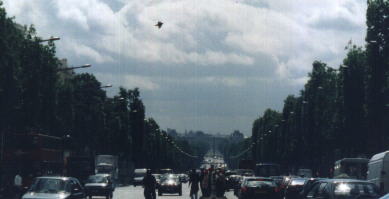
Today most people associate the Eiffel Tower with Paris. Bobbie is shown here where artists display their work.
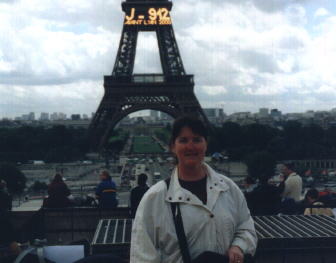
The Eiffel Tower has a lit calendar counting down the days until the year 2000. Much of our time in Paris was rainy but as you can see the clouds didn't hurt the view.
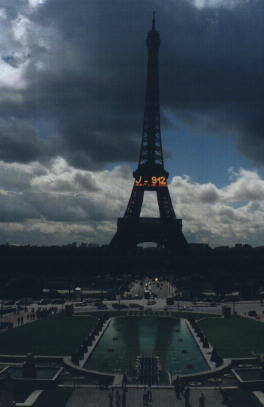
Many Parisian citizens were imprisoned here, the Conciergerie, including Marie Antoinette. It was also known as the Temple. Conciergerie literally means "the keeper".
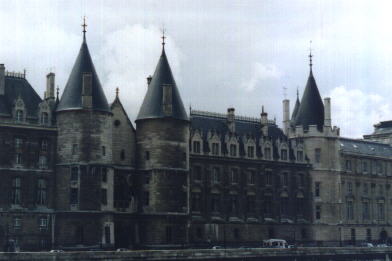
Napoleon's Tomb is inside this domed Basillica behind the Hotel des Invalides once the home for old soldiers now serving as a military museum.
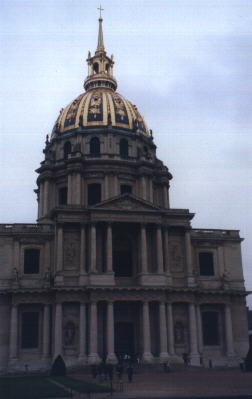
Napoleon II is memoralized with this statue. He was the son of Napoleon and the King of Naples who died early in life.
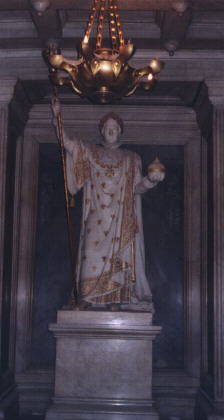
Even in France, Bobbie can't be far from her cats!
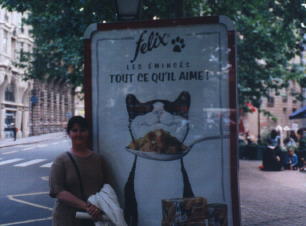
The Hotel de Ville is one of the longest continuously used town halls in France. American flags were out for July 4th.
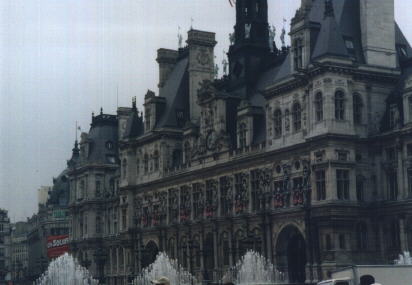
Bruce and Bobbie on one of the predestrian bridges down from the Ile de la Cite.
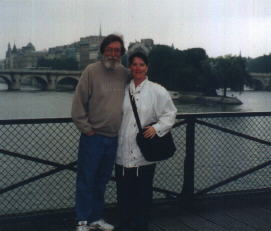
For one of the best views of Paris go to Montmartre and Le Sacre Coeur. If you get off at the Abbesses Metro stop take the elevator. Even the most hearty were exhausted at the end of the 80 plus steps to the top!! We were nearly dead!
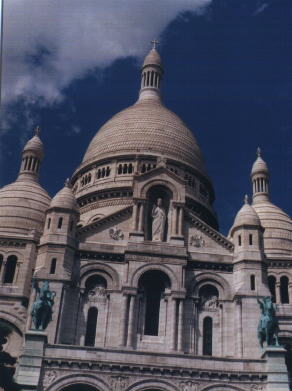
While in Paris we took three side trips. Our first was to Versailles shown here from the front and the back.


Our tour of the Royal apartments saw many beautiful rooms. By far the Hall of Mirrors was the most impressive both for its beauty and its historical significance.


The Versailles gardens are just as impressive as the interior.

Our second visit was to the Palace of Fountainbleu, one of Napoleon's favorites.
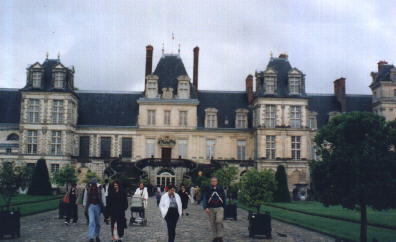
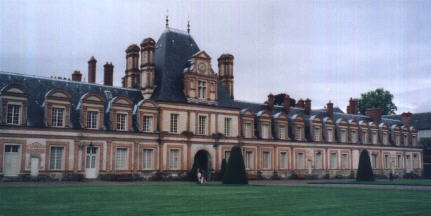
The interior, while not as grand as Versailles, did have wonderful rooms like this, Napoleon's throne room.
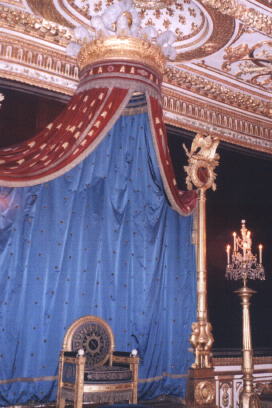
On Saturday before leaving Paris for Normandy we went to Chartres to visit the Cathedral. Its architecture is a mix of Romanesque and Gothic.
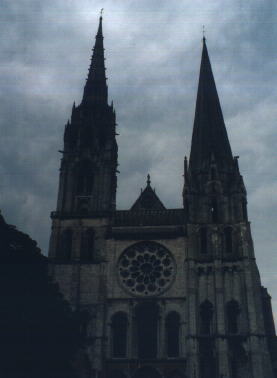

On Sunday July 6th we drove from Paris to Bayeux, Normandy. We stayed at Lion D'or, a charming hotel set back in a quiet courtyard. Our first order of business was to check out the D-Day Landing Beaches. We drove to Arromanches and followed the roads to Utah Beach. Every town and village was affected by the war and choosing which pictures to show was a challenge.
The Pointe du Hoc is well known for the price Americans paid to win it. Here you see the marker detailing what occurred.
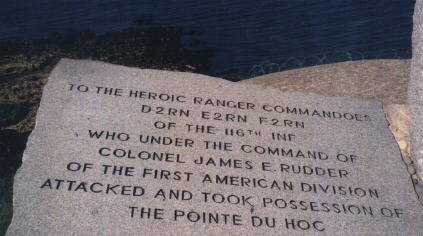
Looking at the jagged edges of the area today can help you see how difficult a task it was.
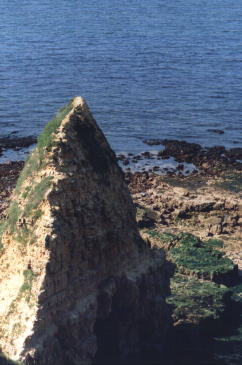
If you look closely you can see the grass covered craters left by the shelling over 50 years ago.
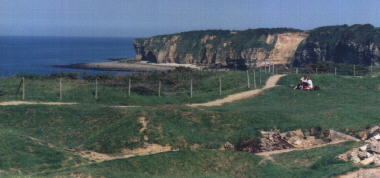
Today Utah Beach is a much calmer area. Omaha Beach still had lots of activity but the sounds of today were children playing while others sunbathed, sailed, swam and enjoyed the peace so harshly won.
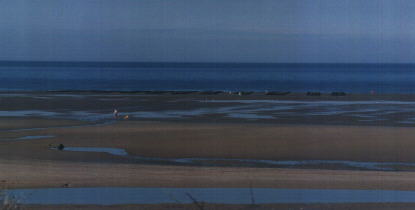
Still reminders of how life was is never far from the French minds or sights. These three pictures show some of the German shore batteries which provided a silent testimony to War. The first two are from Saint-Marcouf. You can see how huge these were. The third is a fortification in Saint- Marcouf-Crisbecq.
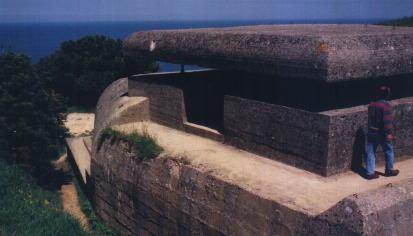
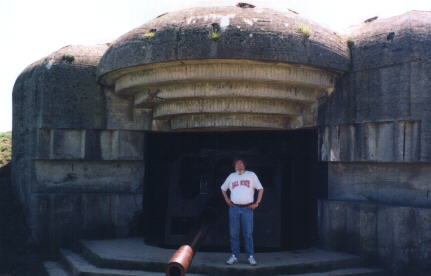
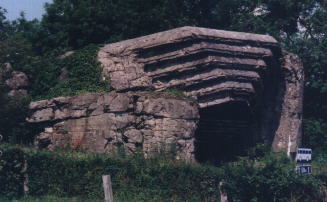
Our visit to Coleville sur Mer and the American Cemetery was truly awesome. Its rows of white markers sloping toward Omaha Beach represent less than 39 percent of those who died landing there in 1944.
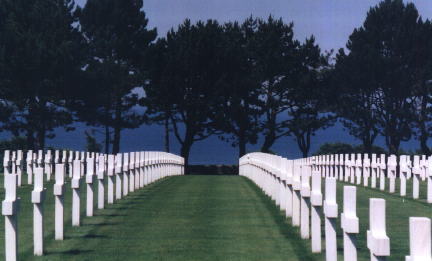
Even today it is easy to see the steep terrain as you look down on Omaha Beach from the cemetery.
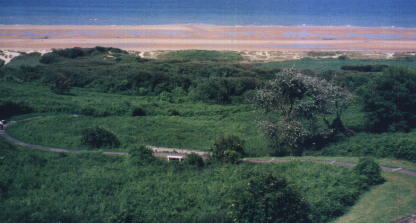
Our second day took us from Saint Merie Eglise to Cherbourg and Saint Lo. The church in Saint Merie Eglise has a model parachutist hanging from the steeple representing the American who landed in that fashion in 1944.
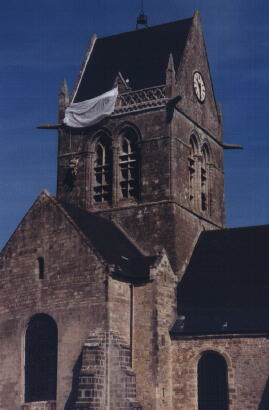
Inside the church are two stained glass windows depicting events. If you look closely you can see the parachutes in the glass.
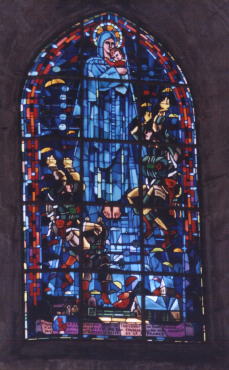
We visited the 82nd Airborne Museum there as well. Father George Wood with whom Bruce's father worked in Fort Wayne was in that unit in 1944. These pictures show items donated by him in the museum.
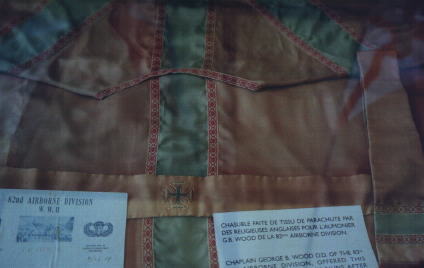
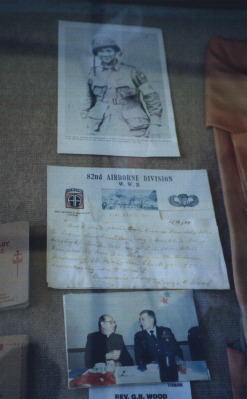
Saint Lo was devastated by the war. Here you can see the church. Its tower survived the bombings and the central wall has been reconstructed.
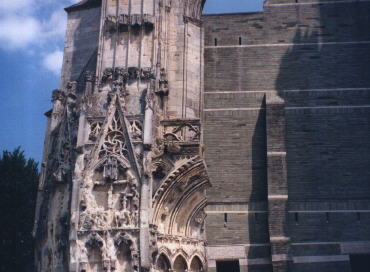
These Medieval fortification walls were unable to protect the people of Saint Lo in World War II.

From Normandy we took the TGV to Nimes. We stayed at the Hotel Plaza. The people there are great. They made us feel very welcome. Nimes has many ancient Roman sites. The arena is much better preserved than the Colosseum in Rome.
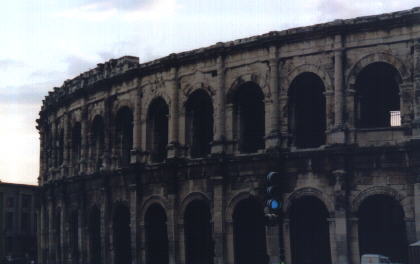
From the top you can get a view of the city and know how it felt to be among the less important people attending an event. Today they have concerts and bull fights here.
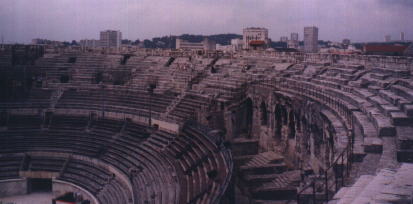
Here is an interior look of the arena passageways.
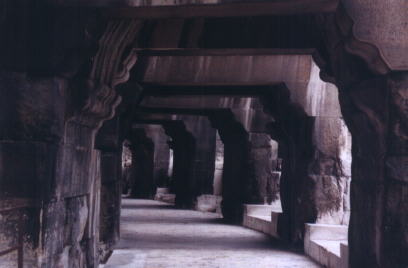
The Maison Carree is a very well preserved Roman Temple. It was built in late 1st Century BC and was inspired by the Temple of Apollo in Rome.
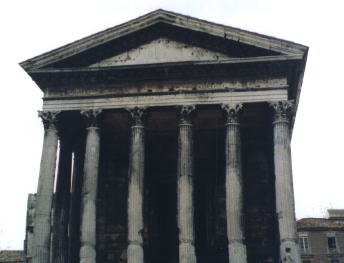
Also here is the Porte d' Auguste, a ruin of the Augustan fortified wall on the Domitian Way. A bronze copy of the statue of Augustus is inside.
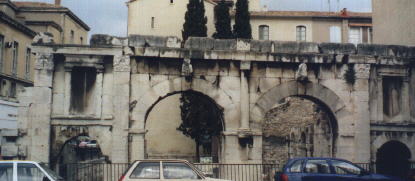
Near Nimes is the Pont du Gard, one of the wonders of Ancient Roman engineering. It was built about 19 BC and spans the Gardon Valley. Graffiti on the bridge covers time from its creation to the modern day.
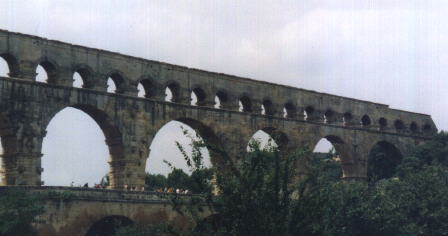
A picture of us in front of the Pont du Gard.
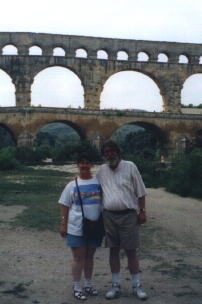
The Amphitheatre in Arles was probably built at the end of the first century. It has served many functions throughout the ages.
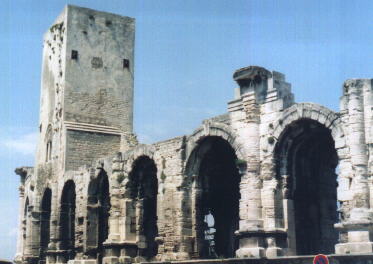
Orange is home to this Arc de Triomphe on the old Via Agrippa which linked Lyon to Arles. It was built about 20 BC and is ranked third among such Roman constructions.
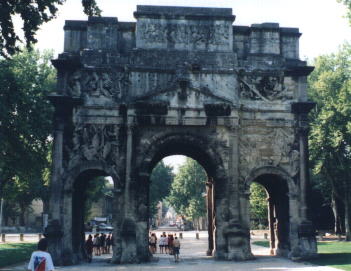
The Roman theatre is the pride of Orange. From its stage you can see how well preserved it is. Built during the reign of Augustus it is the best preserved in the Roman Empire.
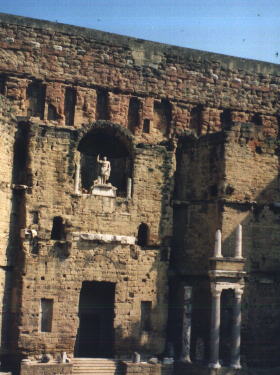
Avignon was the home of the Babylonian Captivity and the Great Schism. Its walled city gates lead into a city full of art, culture and history.
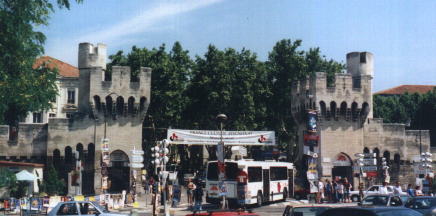
The Palais des Papes (Palace of the Popes) holds little of its earlier furnishings but leaves no doubt of its place in history and its luxuriousness at the time of the Popes.

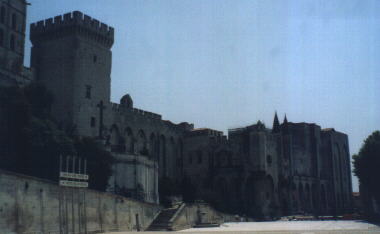
The Pont St. Benezet goes out into the Rhone. Built in 1188, rebuilt from 1234-7 and restored in the 15th Century, it was broken by floods in the mid 17th Century. And so it stands.
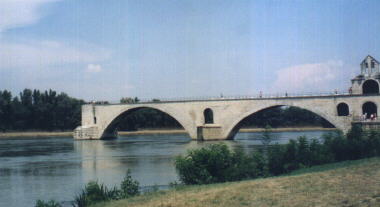
A fortified castle lying in ruins atop a steep ravine in Les Baux-de-Provence.
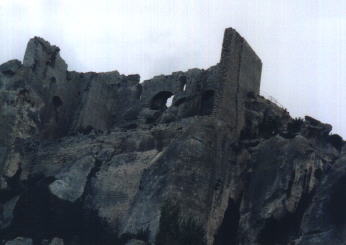
We had a wonderful time and many more pictures and stories to share with those of you who visit.
Au revoir!
Return to Bruce and Bobbie's Main Page.